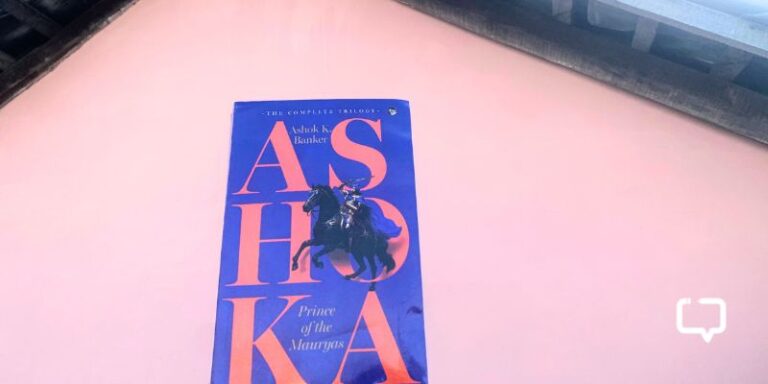Rahul Vishnoi reviews Dead in Banaras: An Ethnography of Funeral Travelling by Ravi Nandan Singh (published by Oxford University Press, 2022).
Dead in Banaras by Ravi Nandan Singh stalks death. From a corner of life, it follows the dreaded visitor as soon as it captures life, extinguishes it, and turns a person into a ‘body’. Dead in Banaras also tracks those who go to bid a final bye to the one who’s passed away into the void. The funeral travellers who accompany the remains on their last journey feature prominently here.
It is not wrong to consider that, more than death, Dead In Banaras follows life intimately, keeping it close to its chest. It is a treatise of life as and when touched by death. How does death change life and the living, how does it affect the societal fabric and the interactions of those who survive the dead, and what do people say and do when someone they love/know isn’t there anymore? What’s the journey of life from the home/hospital to the crematorium/morgue? These are the answers Singh seeks in his book.
Personal Grief and Ethnography
Ravi Nandan Singh had meant this book to be a bystander, an objective analysis of death and the city where people bring their living to die, but in the event of his father’s passing, the book became more than just a book. The grief seeped into the papers, and a tale of a city became adulterated with the lamentation of the leaving of a loved one.
Recommended Reading: Friends, Conversations and a Bookstore in Banaras
Dead in Banaras is then both an ethnography of being in the dead centre of the funerary city and an autobiographical funeral travelling (shav yatra) that narrates the city through a mourner’s logic of using the pyre to illuminate the dead as multiplicity in Banaras.
– Ravi Nandan Singh, Dead in Banaras
Ravi Nandan Singh’s diary of death follows the ‘dead’ across multiple locations of crematoria, hospitals, and morgues to assemble an account of death from the eyes of the living. He invokes Shrikant Verma: ‘”Tumne dekhi hai Kashi/ jahan jis raste jaata hai shav/ usi raste aata hai shav,” which translates as: Have you seen Kashi where the path a corpse departs is the same for a corpse to arrive. He mentions Saraswati too: “Kashi is the place to die when the time comes, to seek liberation, not from any one kind of suffering but from the embodied life itself.”
Kashi’s Historical and Cultural Significance
Mark Twain, after visiting the city in the late nineteenth century, wrote about “Benares”: It is older than history, older than tradition, older even than legend, and looks twice as old as all of them put together. Singh’s lived research underlines why Kashi is the go-to town for death. He talks about funerary rest posts, which are small shelters for funeral travellers to rest spread throughout the city centre and the bazaars.

These rest posts evoke a time when funerals were exclusively carried on foot with accompanying chants of ‘Ram naam sat hai’: The name of Ram is true. Now obsolete with the advent of a motorized funeral procession, these rest posts continue to dot the city’s architecture, now maintained by the city’s municipality and philanthropic organizations.
The Role of Dom in Cremation
One of the most interesting portions of the book is the bargaining with Dom for the last fire. Dom is the people entrusted with building the pyre, helping with the last rituals, and looking after the cremation. Once the funeral travellers reach the crematorium, Dom Raja/Chaudhary asks key questions to weigh the auspiciousness of the death, the stature of the dead, and the place from where the funeral has travelled.
The funeral workers are mostly spot-on in profiling the funeral travellers. A quote is made, which is promptly refused and contested by the funeral travellers. They quote back a much-reduced sum. The funeral worker says the day is exceptionally busy, and he does not have time for haggling. More funeral travellers join the bargain. The senior-most, the Dom Raja, does not talk directly to this set of funeral travellers. Instead, he instructs his workers to leave this party and move on to the one for which the fee is paid.
The funeral travellers are frowned upon by the senior members, as it is their turn to join the bargain. They plead with their counterpart senior funeral workers to get the whole thing going for a reasonable sum. The senior funeral worker complies and quotes a new price. Then pauses, and adds two quintal grains to the quote! And such goes the last journey of the dead.

An interesting fact shared by Singh is that Dom, while cremating, never touches the dead. They give an illusion of touching, but they never actually touch. This is perhaps their retaliation to being boxed as someone who does the death’s work.
Ravi Nandan Singh has discussed various names given to the last rites: The municipal hoarding calls it ‘dah-sanskar’, implying an immolating ritual. At the funeral merchandise shops, it is less formal ‘antim kriya’. Then, there is another name used by the funeral travellers, parvah: a colloquial Bhojpuri word. In Hindi, it means flow. Here, it is referred to in connection with the flow of the river in whose care the dead must be entrusted. This description, Ravi Nandan Singh writes, also rings true for the widely prevalent practices across India of immersing the ashes of the dead in different rivers. Incidentally, parvah, in Urdu, means that one must care.
In the context of the river Ganga (Singh calls it Ganga ji), the author mentions the government’s efforts through the Ganga Action Plan in 1984. It was then that the electric crematorium was set up at Harishchandra Ghat. A few Dom workers were given a boat to fish out floating corpses of animals and humans, collectively called madh, originally used for animal carrion. Once the FIR was registered, the bodies were cremated. Gradually, the practice hit bureaucratic red tape.
Social Practices Around Death
Ravi Nandan Singh talks about a number of social practices revolving around the dead and how the living treats them. While municipal hoardings at Harishchandra cremation grounds refer to the corpse as shav, funeral travellers rarely use that term. A corpse is a ‘body’ if released from the morgue/hospital and ‘maati’ if the person dies at home. It is said that the fire from the kitchen hearth accompanies the corpse. This ‘taking’ of fire implies that the home kitchen is left without fire used for making pucca food till the key death rituals are concluded.
Singh mentions death at home and writes that no matter how prepared you may be with the knowledge that the dying will die, death always comes as a surprise. The funeral travellers would claim that ‘the deceased was heartily talking when I met him just yesterday’ or ‘I was only gone for a while to come back and see this.’ There is wailing and crying in the house, but death has not become a ‘pollutant’ yet. The acts of touching the dead, throwing oneself over the dead, shaking the corpse and abusively lamenting it for cheating and escaping through death are carried out by the loved ones.
Ravi Nandan Singh also discusses the practice of not telling a loved one who’s far away from home and would travel back about the unexpected death in the family. The person is always informed about the deceased’s ‘illness’ and not the actual death. The logic behind this concealment is that the loved one should not be too bereaved to travel. Also, they must be near the family to share their grief.
Favourite Quote from Dead in Banaras by Ravi Nandan Singh
One of the most poignant moments shared by the author is when he rewatched an old wedding tape. He writes:
Father is strutting around, all smiles, living up to what the Zen Haiku poet Aki-no-bo says in his death poem:
No sign
in the cicadas song
that it will soon be gone.
Conclusion
Ravi Nandan Singh’s Dead in Banaras would come as a shock for those who haven’t gone through the death of a family member. For those who have, it will act as an uncomfortable reminder of the difficult times.
Have you read this journey through Kashi’s sacred rituals and traditions connecting life to death? Share your thoughts in the comments below!






















